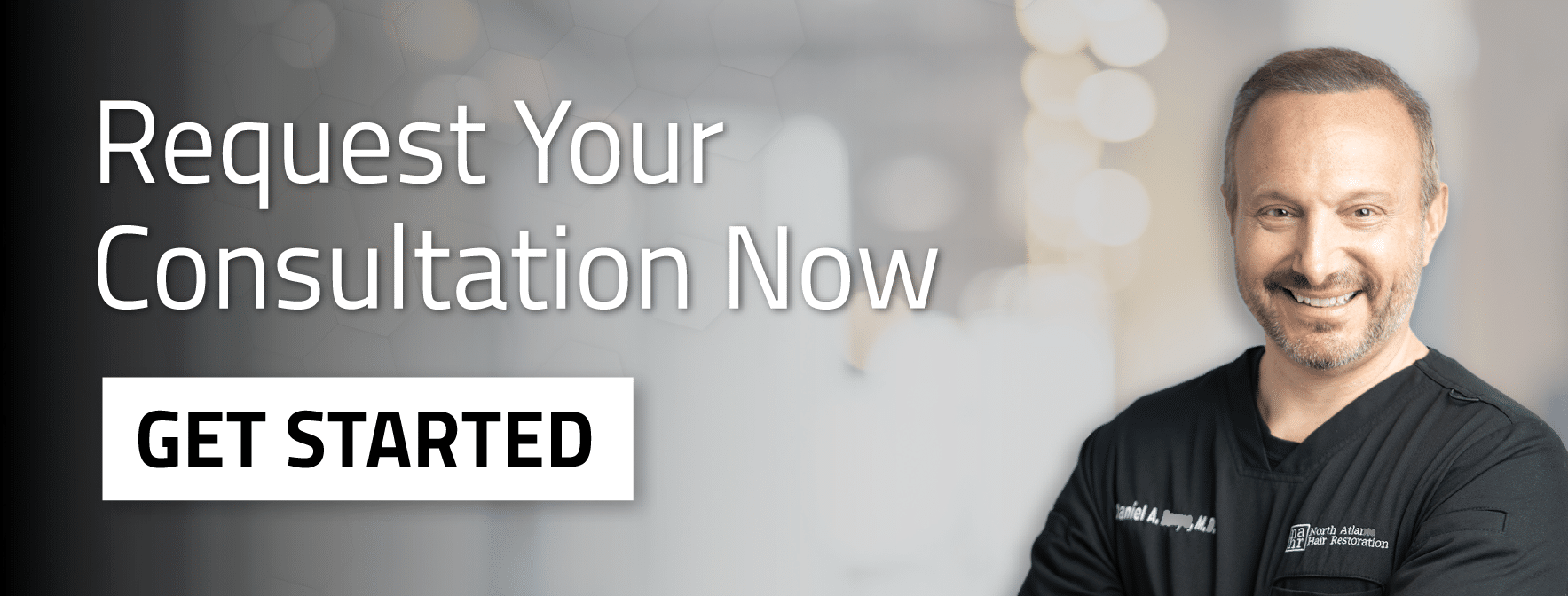In the quest for effective hair restoration, many individuals often ponder the success rate of various treatments. Understanding the success rate of hair restoration is crucial, as it varies significantly based on individual circumstances and medical interventions. This blog will explore the multifaceted aspects that contribute to the success of hair restoration solutions.
All episodes of the Hair Restoration With Dr. Daniel A. Danyo podcast can be found on Apple Podcasts and Spotify.
Introduction to Hair Restoration
Hair restoration has evolved significantly over the years, offering a variety of options for individuals experiencing hair loss. The journey to regaining one’s hair can be both exciting and daunting. It encompasses not just the procedures themselves but also the emotional and psychological aspects of dealing with hair loss. Understanding the intricacies of hair restoration is essential for making informed decisions.
From traditional methods like hair transplants to advanced techniques such as Shave-Less FUE, the choices available can be overwhelming. Each method has its own set of benefits, risks, and expected outcomes. However, at the heart of every hair restoration journey lies a common goal: to restore confidence and enhance one’s appearance.
Defining Success in Hair Restoration
Success in hair restoration is not a one-size-fits-all definition; it varies from person to person. For some, success may mean achieving a full head of hair, while for others, it might simply involve halting hair loss or improving the density of existing hair. It is crucial to establish clear, realistic goals before embarking on any restoration journey.
Factors contributing to the definition of success include:
- Personal expectations and desires
- Type and extent of hair loss
- Choice of restoration method
- Overall health and medical history
Moreover, the emotional aspect of success should not be overlooked. Many individuals experience a boost in self-esteem and quality of life following successful hair restoration. This can be as significant as the physical changes they undergo.
The Hair Restoration Formula
The process of hair restoration can be likened to a formula, where various elements come together to create the desired outcome. Each patient’s formula is unique, influenced by individual circumstances and needs. Key components of this formula include:
- Donor Hair Quality: The condition and availability of hair follicles from the donor area are critical.
- Technique Used: Different techniques, such as FUE or FUT, can affect the results.
- Patient’s Health: Overall health conditions can impact healing and hair growth.
- Post-Procedure Care: Following medical advice post-surgery is vital for optimal results.
Each of these factors plays a role in determining the success rate of hair restoration. A comprehensive consultation with a qualified specialist can help outline a personalized restoration plan that addresses these components effectively.
Realistic Expectations and Perceptions
Setting realistic expectations is crucial in the hair restoration process. Often, individuals may have idealized images of what results should look like based on social media or celebrity endorsements. However, these portrayals can create misleading perceptions about what is achievable.
It’s essential for prospective patients to engage in open discussions with their healthcare providers about what results can realistically be expected. This includes understanding the limitations of the chosen method and the time frame for seeing results. Here are some key points to consider:
- Real results take time; it may take several months to see noticeable changes.
- Each individual’s hair growth pattern is unique, affecting overall results.
- Multiple procedures may be necessary for optimal results, especially in extensive hair loss cases.
By managing expectations, patients can mitigate disappointment and better appreciate the gradual process of hair restoration.
Statistical Success Rates
The success rate of hair restoration varies depending on several factors, including the technique used and the individual’s unique circumstances. Generally, studies indicate that when performed by skilled professionals, hair restoration procedures can achieve a high success rate. For instance, many patients experience a success rate of up to 95% in terms of hair follicles taking hold and growing after a transplant.
However, it is crucial to acknowledge that a small percentage, about 1-2%, may not experience any growth at all. This variability can stem from:
- Underlying health issues
- Inadequate donor hair
- Improper post-operative care
Understanding these statistics can help patients make informed decisions about their hair restoration journey. It is also a reminder of the importance of choosing a qualified and experienced practitioner to maximize the chances of success.
The Role of Medical Management
Medical management plays a significant role in enhancing the success rate of hair restoration. Medications such as finasteride and minoxidil have been shown to be effective in slowing hair loss and promoting regrowth in many patients. These treatments can be particularly beneficial when used in conjunction with surgical procedures.
For instance, a combination of low-dose finasteride taken four days a week alongside daily minoxidil can yield impressive results. Research indicates that:
- Patients can have a 75-80% chance of halting hair loss.
- Approximately 50% may experience improved hair volume.
Incorporating medical management into the hair restoration formula not only improves the chances of success but also enhances overall satisfaction with the results. Regular follow-ups and adjustments to treatment plans can further optimize outcomes.
The Importance of Personalized Consultations
Personalized consultations are fundamental in the realm of hair restoration. Each individual’s hair loss pattern, medical history, and expectations are unique, making it crucial to tailor the approach to their specific needs. During a consultation, a qualified specialist will assess the extent of hair loss, discuss potential treatment options, and establish realistic goals.
Moreover, these consultations serve to educate patients about the various methods available, including surgical options like FUE and non-surgical treatments like PRP therapy. The depth of understanding gained during these discussions can significantly impact the overall success rate of hair restoration.
In addition to the technical aspects, personalized consultations also foster a relationship built on trust and transparency. Patients should feel comfortable discussing their concerns and aspirations, which can lead to a more satisfying and effective treatment experience.
Multiple Treatments and Follow-Up Procedures
Hair restoration is often not a one-time event but rather a process that may involve multiple treatments and follow-up procedures. Many patients find that achieving their desired results requires more than one session, especially in cases of extensive hair loss. For instance, addressing the frontal hairline may necessitate a secondary procedure to enhance density or cover additional areas, such as the crown.
Statistically, about 50% of patients who undergo initial procedures may require subsequent treatments. This can be due to continued hair loss or the need to refine and perfect the results. Understanding this aspect of the journey is vital for managing expectations and ensuring long-term satisfaction with the outcomes.
Follow-up procedures also allow specialists to monitor progress and make necessary adjustments to treatment plans. Whether through additional grafts or complementary therapies, these follow-ups are essential in achieving a successful restoration.
Follow-Up Process: What to Expect
The follow-up process after hair restoration is critical in ensuring optimal results. For patients who have undergone surgical procedures, the initial follow-up typically occurs around six months post-operation. At this point, the specialist will evaluate the growth of transplanted hair and address any concerns.
During these follow-ups, patients can expect to:
- Receive updates on the healing process and hair growth progression.
- Discuss any side effects or complications that may have arisen.
- Plan for additional treatments if necessary.
For those on medical management, such as finasteride or minoxidil, follow-up appointments are often scheduled every six months to monitor efficacy and side effects. This proactive approach ensures that patients remain on the best path to success.
Choosing the Right Specialist
Choosing the right specialist is perhaps one of the most significant decisions in the hair restoration journey. A qualified and experienced practitioner can make all the difference in achieving desired results. Patients should seek out professionals who specialize in hair restoration and have a proven track record of success.
Key considerations when selecting a specialist include:
- Education and training in hair restoration techniques.
- Experience with various hair loss treatments and their success rates.
- Patient testimonials and before-and-after photos to gauge previous outcomes.
Consultations should feel informative and reassuring, with the specialist providing clear explanations and realistic expectations about potential results. This relationship is vital for navigating the complexities of hair restoration.
Navigating the Path to Hair Restoration Success
Navigating the path to hair restoration success involves careful consideration of multiple factors, including personalized consultations, realistic expectations, and the selection of a qualified specialist. Achieving a satisfactory outcome often requires a multifaceted approach, combining surgical procedures with medical management and follow-up treatments.
As individuals embark on this journey, it is essential to remain informed and engaged in their treatment plans. By understanding the intricacies of the process and fostering open communication with their specialists, patients can significantly increase their chances of a successful hair restoration experience.
FAQs about Hair Restoration
As with any medical procedure, questions often arise regarding hair restoration. Below are some frequently asked questions that can provide further clarity:
- How long does it take to see results? It typically takes several months to notice significant changes after hair restoration. Most patients begin to see results around six months post-procedure.
- Are there any risks associated with hair restoration? Like any surgical procedure, there are risks, including infection, scarring, and the possibility of graft failure. Discussing these risks with a specialist is crucial.
- Can hair restoration be combined with other treatments? Yes, many patients benefit from combining surgical and non-surgical treatments to enhance their results. This may include medications like finasteride and minoxidil.
- What is the cost of hair restoration? Costs vary based on the method used, extent of treatment, and geographical location. Patients should consult with their specialist for a personalized estimate.
- Is hair restoration permanent? While transplanted hair is generally permanent, ongoing hair loss may require additional treatments or procedures.
For anyone considering hair restoration, seeking comprehensive information and consulting with a qualified specialist is the best way to ensure a successful outcome.


